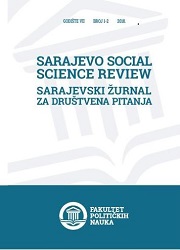Asymmetric Deterrence and Punishment Systems for Combating Collusive Bribery: A Theoretical Examination of Legalizing Bribe-Giving
Asymmetric Deterrence and Punishment Systems for Combating Collusive Bribery: A Theoretical Examination of Legalizing Bribe-Giving
Author(s): Jasmin HasićSubject(s): Criminal Law, Evaluation research, Criminology, Corruption - Transparency - Anti-Corruption
Published by: Fakultet političkih nauka - Univerzitet u Sarajevu
Keywords: collusive bribery; deterrence; punishment frameworks; asymmetric liability;
Summary/Abstract: Detection of bribery cases is very hard in practice, as all parties suspected to be involved in the process are not incentivized to cooperate with law enforcement authorities. Most legal systems treat bribe-giving and bribe-taking as symmetric and interdependent criminal actions, thus making whistle-blowing on corrupt officials much harder. This paper investigates the effects of different punishment systems on deterring bribery. The overall aim is two-fold: the first is to outline the differences between the symmetric and asymmetric punishment systems and to explore the impact of legal liability of parties engaging in collusive bribery; the second is to propose a theoretical approach to deterring collusive bribery labeled as “facilitated asymmetric liability model”.
Journal: Sarajevski žurnal za društvena pitanja
- Issue Year: VII/2018
- Issue No: 1-2
- Page Range: 39-55
- Page Count: 17
- Language: English

